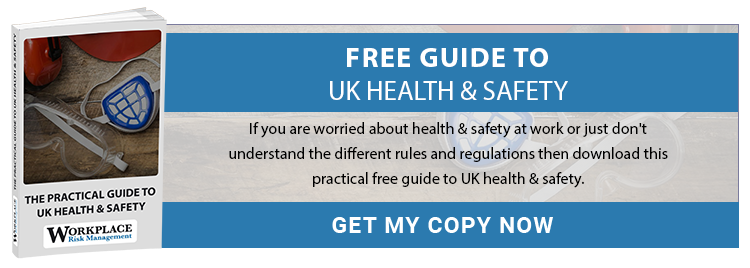
Compared with recognised risky industries such as agriculture and construction, the perception that retail is low risk is not surprising. But even farms or construction sites do not commonly suffer from members of the public walking in off the street and committing acts of violence. Every industry sector, including retail, has its own H&S risk profile. Within that, every retail high street outlet, distribution centre or admin office can have additional unique risks.
What The Statistics Tell Us About H&S Risks In Retail
The HSE publishes detailed statistics across all industry sectors and performs some comparisons between them at a high level (count of fatal and non-fatal, for example). This identifies the following incident types as the most common accident causes for the retail industry:
1) Slips And Trips
This is the single biggest cause of workplace accidents across all UK business sectors. One can understand why this might be the case in sectors such as agriculture and construction where the terrain and underfoot conditions add to the inevitable leaving about of tools and materials. It may surprise some that it is so prevalent in a relatively safe, mostly indoor industry such as retail.
Slips can be caused by bad weather, where rain and slush get transferred into retail outlets on the shoes of customers. Cleaning operations are an obvious source of potential hazard also. Trips are frequently caused by items left in a walkway momentarily. Most staff are very H&S conscious as regards public areas and keeping them clear, but the message needs to be reinforced frequently.
2) Manual Handling (Lifting Heavy Objects)
Despite this activity being highlighted as one that does require training for all staff, far too many incidents still occur. The resulting types of injury, such as low back pain, are inevitably both invisible and painful, resulting in prolonged sick leave in many cases.
3) Falls From Heights
This includes objects falling from a height as well as individuals falling from elevated walkways, ladders and suchlike. Retail distribution centres (warehouses) are more prone to this type of incident but anybody can drop a heavy object accidentally on someone’s foot, for example.
Summary
The types of accidents listed above seem extremely mundane in nature and training need not be lengthy or complex. However, training is required on a frequent repeat basis to hammer home the message and raise awareness. Also, retail does have a high staff turnover rate, with many casual and volunteer workers, which is another rationale for running frequent training sessions.
Assessing Risks And Reviewing The H&S Plan For Retail
Professionals such as us at Workplace Risk Management have many years’ experience in all aspects of H&S compliance, from looking at risks, through developing plans to organising and delivering appropriate staff training. Engaging us is akin to bolting on a team of H&S experts to your existing organisation. Not only should your safety levels improve but the rate of accidents and incidents should see a fall because our advice is pinpointed with laser-like accuracy at the weak points, poor practices and real risks in your workplace.
Contact Us
You have nothing to lose by investigating how beneficial it would be for your company’s H&S compliance to partner with us for professional input. Contact us today for an initial discussion.


